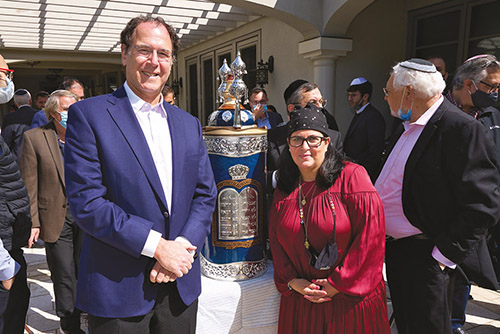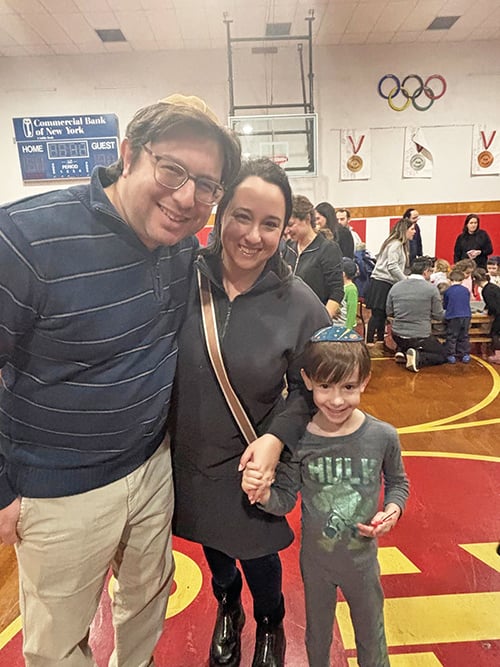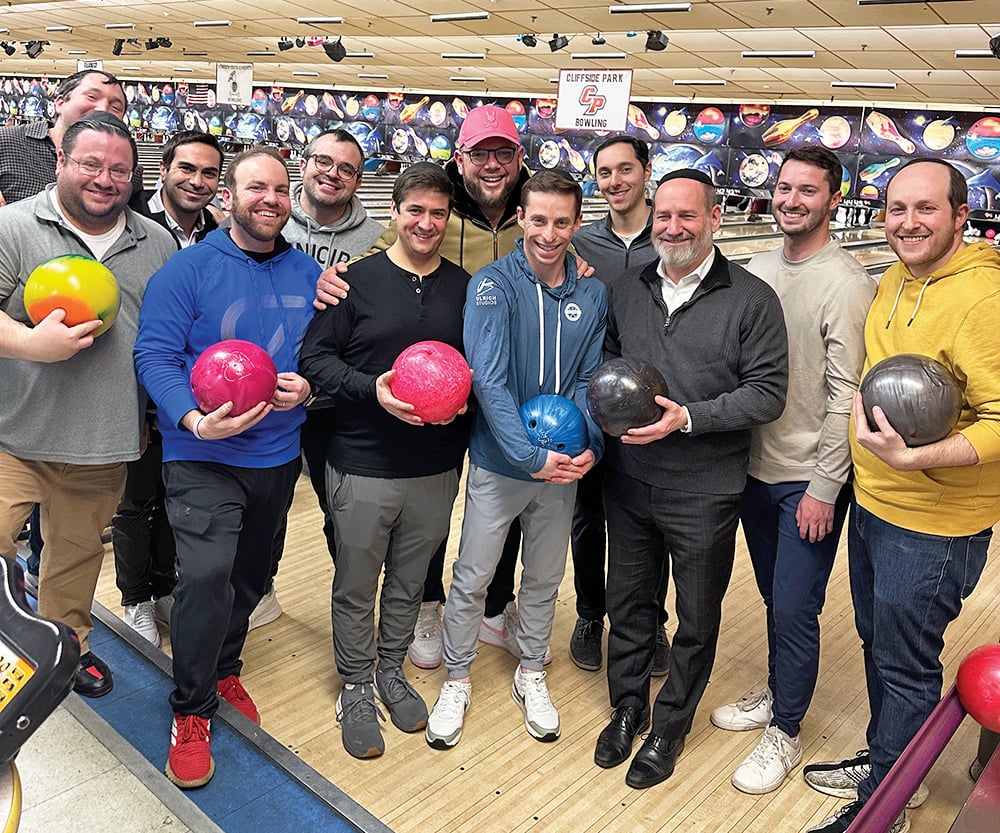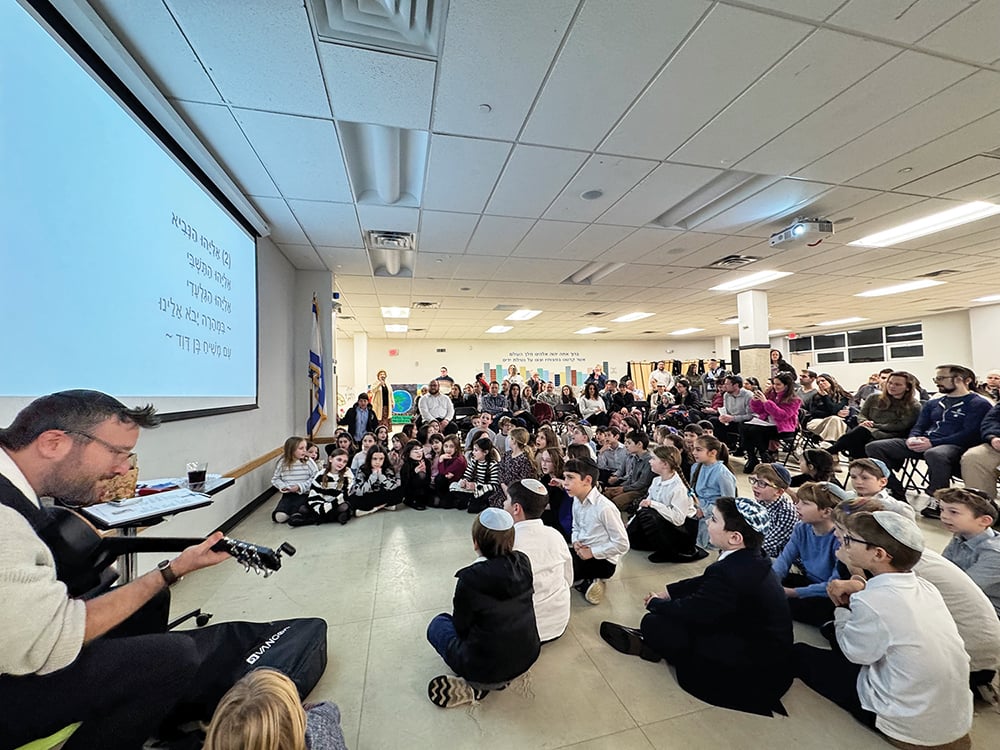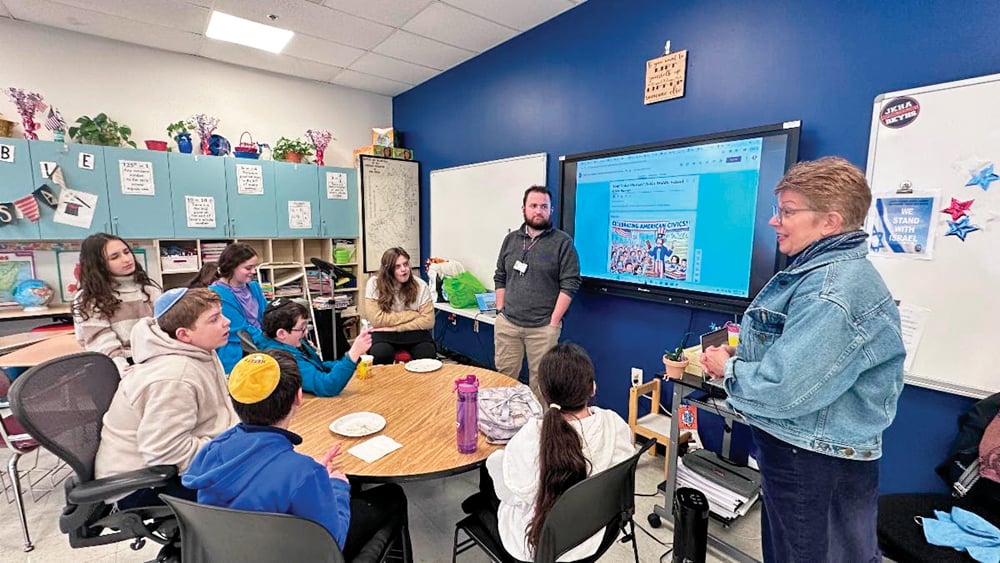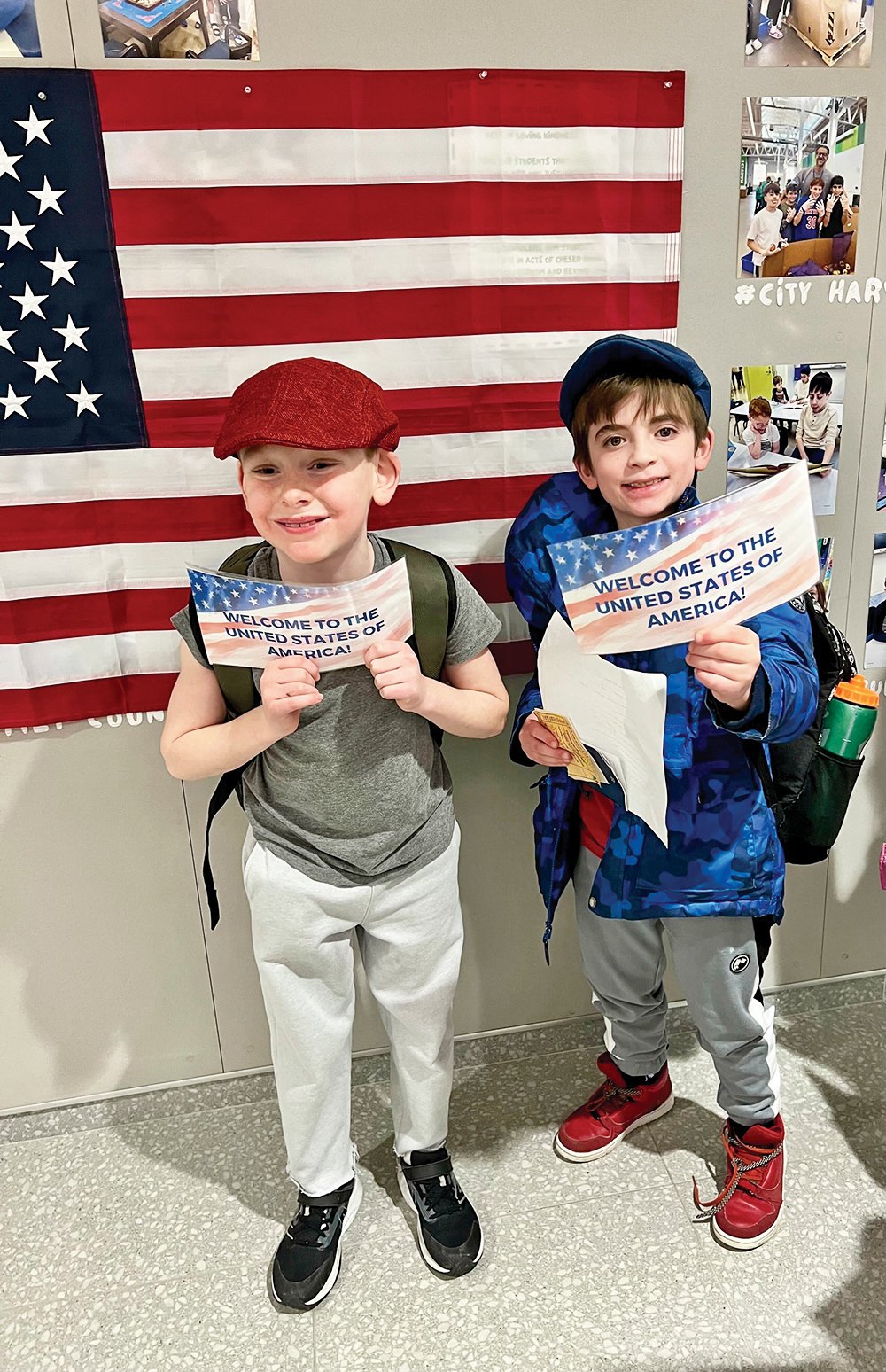




On May 9, the Sephardic minyan at the Young Israel of New Rochelle welcomed a new sefer Torah. The Sephardic-style Torah was commissioned by Sephardic minyan members and dedicated l’ilui nishmat Meyer ben Haim, Meyer Ouaknine, z”l.
Festivities, held at the home of Steven and Nataly Neuwirth, began with a traditional Sephardic Shacharit. The Torah’s sofer, HaRav Bensadoun, brought his handiwork from Israel to complete the final 26 letters of the Torah. Twenty-six members of the community were honored with writing these letters.
Nataly Neuwirth said: “My dad is present in my life now more than he ever was. He is my angel. He has taught me and my siblings so much about how to be a human being. More importantly, he taught us the true meaning of kibud av v’em in the way he honored his own parents. We cannot duplicate that, even if we tried. While the idea of a more regular Sephardic minyan within our own community was brewing, the details of what’s involved included having its own sefer Torah.”
YINR Rabbi Reuven Fink remarked of Neuwirth’s parents: “In your town, you were the guardians of the faith, the guardians of the cemetery, the guardians of tzadikim. One of the great features that Mr. Ouaknine had was his smile; his smile radiated his holy and tremendous soul. When you were with him, you felt that connection.
“It’s another celebration today, which is the great celebration,” Rabbi Fink added. “Mr. Ouaknine, if he were here, would tell you that’s the main celebration: the celebration of the continuity of the oldest Jewish traditions that we know of.
“I love coming to the Sephardic minyan. It’s a tradition, just to hear the young boys following in the tradition with the proper nigun, the proper kavanah, the proper everything, just to hear the continuity of the generations, which is wonderful,” Rabbi Fink concluded.
David Lallouz said: “I moved here less than six years ago. I will say, completely honestly, it was not clear that I was comfortable moving here.” In a conversation with Gerald Cohen at that time, Lallouz told him,“I just cannot imagine the possibility of moving to a town with no Moroccan synagogue, let alone not a weekly Sephardic minyan.
“Gerald said to me, ‘Move here. Come. It will happen. We’ll do it. I promise’.” With that assurance, the Lallouz family moved to New Rochelle. “At first we met every two months. After not too long, it became monthly and it stayed that way for a while.”
The Sephardic minyan added Yom Kippur in 2018 and 2019; then came COVID. When the minyan reopened in the spring in the Ruah’s backyard, they borrowed a Sephardic Torah from Rabbi Mitchel Serels’ Magen David Congregation of Scarsdale.
Moshe Abehsera explained the differences between a Sephardic and Ashkenazic Torah. The k’tav itself is different. In Morocco there were different traditions, depending on where you lived in the country. Some communities had etz-chaim-style Torahs and others had the more decorative, big round ones. “We went ahead with something that was more traditional in nature. We wanted to go ahead and do something that was really festive, giving it hiddur mitzvah.”
“Ours is a blue mahogany wood with silver,” Abehsera continued, “inscribed on top in the memory in Hebrew of Nataly’s father, Meyer Ouaknine. We are honoring an elder statesman, someone we respected tremendously as a real righteous and humble person.”
Abehsera described the Sephardi minyan: “The way we do things is we sing every single word out loud. The leaders are the children; they’re singing—and leading. It is so beautiful for us, having that tradition. In the past we would just go to shul and either hum to ourselves, in our heads or in the corner, or sometimes, just to be perfectly honest, we would stay at home and sing out loud in order to keep what we had alive.
“We enjoy every moment of tefillah,” Abehsera said. “It’s not a race; every single second that we pray is something that we cherish. We feel that the tunes are so holy, that there’s kedusha in the tunes themselves. We firmly believe that those tunes were passed down from generation to generation; that’s why we do everything so meticulously when it comes to the tefillah.”
Lallouz added: “As we approach Shavuot a year later, we’re never going to stop. I know it will not be long before we have three tefillot a day, and shiurim and a Daf Yomi or two every day, and more. It’s going to happen.”
The completed Torah was then delivered to the main YINR building for a parade under a chuppah, with many YINR members singing, dancing and escorting the Torah to its new home in the aron kodesh of the old YINR building.
By Judy Berger


